While the first OnePlus Nord was about the company returning to its roots and offering a competent smartphone under Rs 30,000 again, the Nord 2 hopes to go a few steps further and secure the ‘flagship-killer’ title. OnePlus has taken a measured approach towards expectations management this time around, but this new phone may be almost ‘everything you could ask for’ in this budget. After having used the OnePlus Nord 2 for over a month and a half and assimilating a couple of software updates, here’s what we think about it.
OnePlus Nord 2 Design: Feels premium with the OnePlus 9 series design language
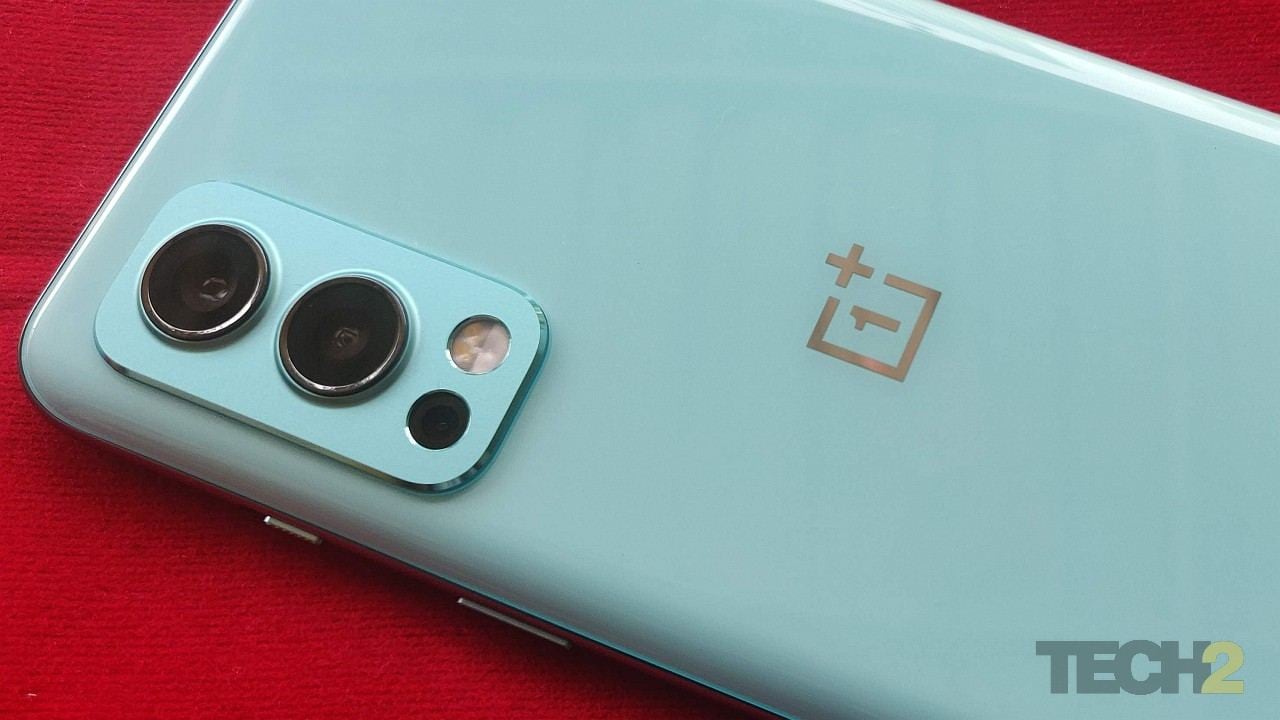
OnePlus Nord 2 5G. Image: Tech2/Ameya Dalvi
The OnePlus Nord 2 has a classy exterior that adopts the same design language as that of the OnePlus 9 series. We got the Blue Haze variant for review, which has a beautiful, light blue, ceramic-like glass back (a shade or two lighter than the Lake Blue variant of the OnePlus 9R(Review) that curves and blends seamlessly into the plastic edges. The edges do not feel plasticky, but attract a few smudges due to their glossy finish. Incidentally, one can barely notice any smudge marks on its glass back.
The phone is relatively compact due to its smaller screen, but the chin is slightly more conspicuous than on the 9R. The build quality is quite solid, but the phone feels a tad heavy in the hand despite its sub-190 gm weight. The display as well as the back of the phone are protected against scratches by Corning Gorilla Glass. One big improvement here is the centimetre-long capsule shaped cut-out for the dual front cameras is replaced by a tiny punch-hole for the solitary selfie camera. Excellent decision!
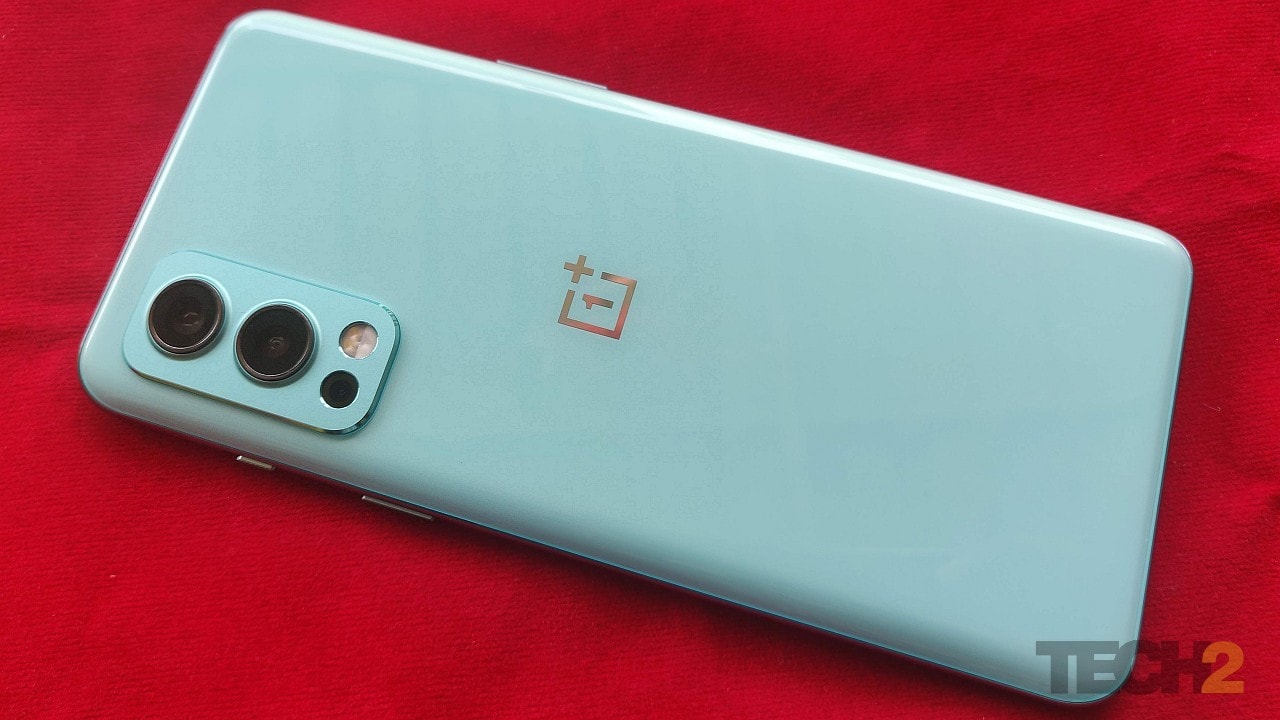
The OnePlus Nord 2 has a classy exterior that adopts the same design language as that of the OnePlus 9 series. Image: Tech2/Ameya Dalvi
At the back, the camera layout is somewhat like the OnePlus 9’s (Review), with a lightly protruding rectangular module that hosts three cameras and the flashes at the top left. The blue shade on the back extends to the camera module. You get an in-display fingerprint scanner that’s highly responsive and works perfectly fine. The SIM tray is present along the bottom edge of the phone and can accommodate two nano-SIMs. Next to the SIM tray are a USB-C port and the phone speaker. The volume rocker is placed along the left edge, and the power button is located on the right edge along with OnePlus’ alert slider. All buttons are well within reach.
OnePlus Nord 2 Key specifications
- Mediatek Dimensity 1200 SoC
- Mali-G77 MC9 GPU
- 8 GB or 12 GB RAM
- 128 GB or 256 GB UFS 3.1 internal storage
- 6.43-inch Full HD+ (2400 x 1080) Fluid AMOLED display with 90 Hz refresh rate and Corning Gorilla Glass
- Cameras: 50 MP with PDAF and OIS (main) + 8MP (ultra-wide) + 2 MP (Monochrome); 32MP (wide) selfie camera
- 4,500 mAh battery with bundled 65W Warp charger
- Android 11 with OxygenOS 11.3
- 5G compliant; Bluetooth 5.2; Dual band Wi-Fi a/b/g/n/ac/6
OnePlus Nord 2 Price in India
Rs 29,999 for 8 GB RAM with 128 GB internal storage
Rs 34,999 for 12 GB RAM with 256 GB internal storage
OnePlus Nord 2 Display: Not bad, but could have been better
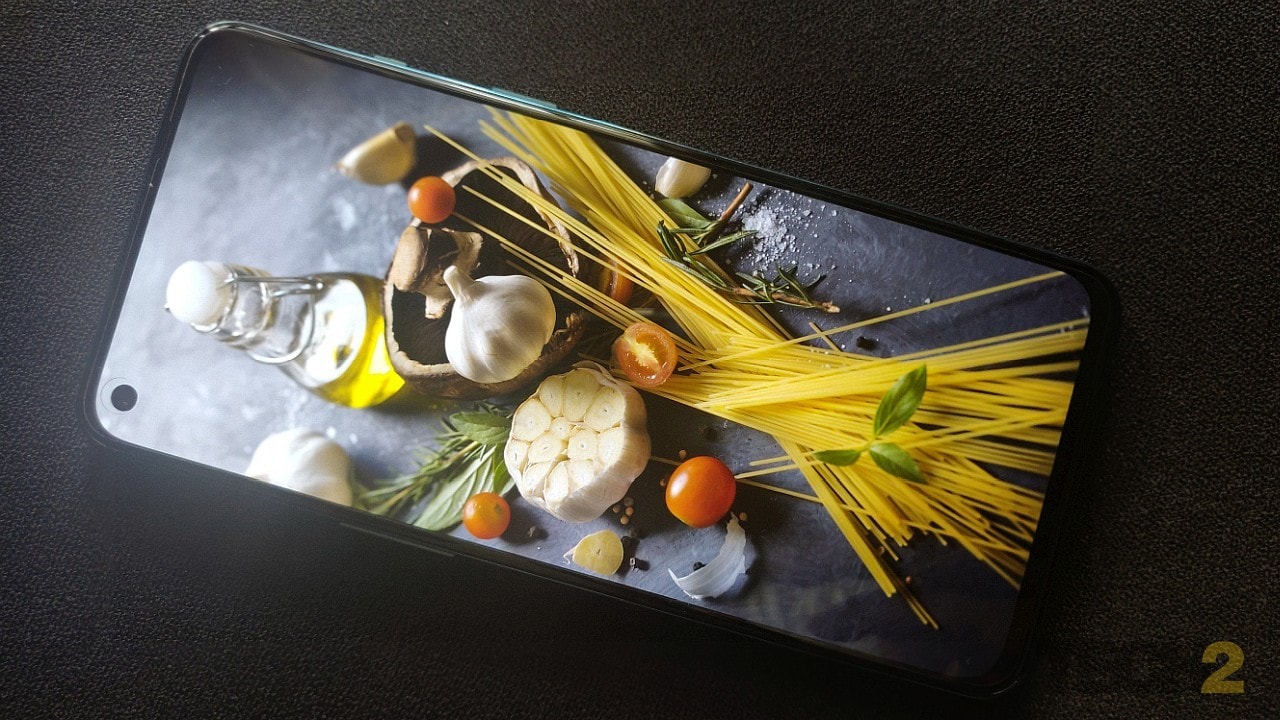
You get a 6.43-inch Fluid AMOLED display with a resolution of 2400 x 1080 pixels and a 90 Hz refresh rate on the Nord 2. Image: Tech2/Ameya Dalvi
OnePlus has opted for pretty much the same display as present on the first Nord. You get a 6.43-inch Fluid AMOLED display with a resolution of 2400 x 1080 pixels and a 90 Hz refresh rate on the Nord 2. Though 90 Hz is smooth enough, the competition and other OnePlus phones have moved on to 120 Hz refresh rates. The HDR10+ compliant display is vibrant and well-calibrated out of the box. You get an option to switch the refresh rate from 90 Hz to 60 Hz to save battery, but don’t bother; it switches to 60 Hz automatically in apps that don’t support it.
Black levels and contrast are excellent and so is colour reproduction. Unlike prior OnePlus phones, colours aren’t overly boosted in Vivid mode, which is a good thing. If you still find them too vibrant for your liking, you may switch to Gentle mode. The phone also offers you some manual calibration options to fine tune it further. Ambient display is present here and you can either leave it on all the time or set a gesture like picking up the phone or tapping the screen to bring it up. I would suggest the latter as it saves some battery.
OnePlus Nord 2 Performance: Surprisingly powerful, flagship grade performance
The OnePlus Nord 2 is powered by Mediatek’s Dimensity 1200 SoC, which turned out to be almost as powerful as a Snapdragon 865; quite impressive for a phone priced under Rs 30,000. It is extremely powerful for absolutely anything one would look to do on a phone, including gaming. Our test unit had 12 GB RAM and 256 GB of UFS 3.1 internal storage to go with it. There was absolutely no lag in day-to-day operations in any of the usual apps, or when switching between multiple apps.
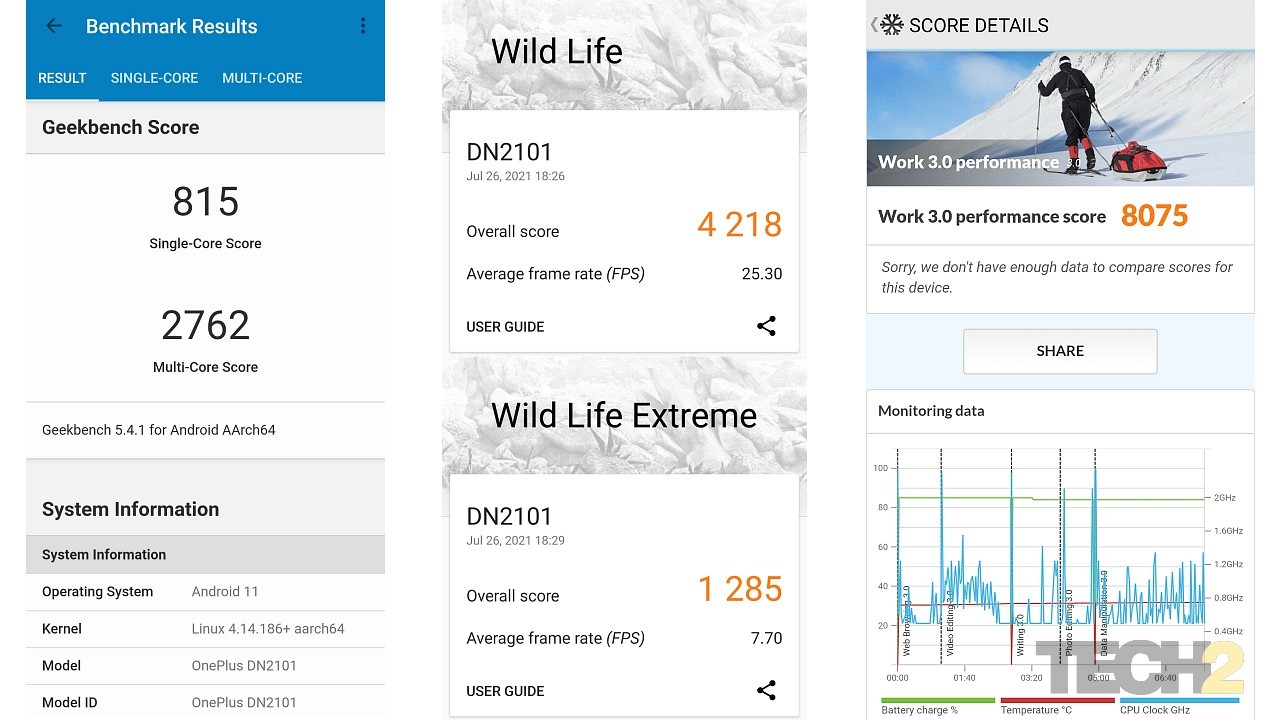
Benchmark scores
The overall gaming experience was smooth and enjoyable at high settings. The phone got a little warm after 30 minutes of gaming, but nothing alarming. The dual stereo speakers (earpiece and the speakers at the bottom) manage to produce good quality audio with a decent stereo effect. The phone supports AptX, AptX HD and LDAC for better throughput over Bluetooth 5.2 on earphones that support those codecs. It also supports LHDC codecs that even the OnePlus 9 series phones lack yet (at the time of testing). Call quality on the Nord 2 is perfectly fine, too.
In performance benchmarks, it managed some impressive scores. Just like the OnePlus 9R, it maxed out in 3DMark Sling Shot Extreme – Vulkan benchmark, and we had to opt for an upgraded set of tests to push the phone harder. We replaced it with Wild Life and Wild Life Extreme benchmarks and the results were neck and neck with those of the Adreno 650 GPU on the 9R. The Mali-G77 MC9 GPU here returned scores of 4218 and 1285 respectively in those two tests with 25.3 and 7.7 average FPS. In the same test, the 9R scored 4245 and 1223 with 25.4 and 7.3 average FPS respectively. That is mighty impressive.
In Geekbench 5, the Nord 2 recorded a Single-core score of 815 and a Multi-core score of 2762 as opposed to 974 and 3101 scored by the Snapdragon 870 on the 9R. A difference of about 15 percent for a phone priced 33 percent lower: not bad at all. Also, there is a massive jump in performance from the first Nord that managed scores of 613 and 1942 in the same benchmark. So, we can concur the performance of Dimensity 1200 is a lot closer to the Snapdragon 865 than the Snapdragon 765.
It couldn’t catch up to the big boys in PC Mark Works 3.0, though, with a score of 8075 as compared to 11266 on the 9R. But let’s not forget that these are synthetic benchmarks that give you a broad, comparative picture between different processing hardware. The difference is barely noticeable in real-world usage. It is a smooth operator in day-to-day tasks.
OnePlus Nord 2 Battery performance: Good battery life, superfast charging
The battery capacity has been bumped up by 3,850 mAh in comparison to its predecessor. The 4,500 mAh battery lasts over 30 hours of normal use that includes a generous use of messaging and social media apps, browsing, a few calls, clicking a few photos, an hour of watching videos and half hour of gaming. Nothing wrong with these figures at all.

The battery capacity has been bumped up by 3,850 mAh in comparison to its predecessor. Image: Tech2/Ameya Dalvi
What’s even better is that the company now bundles a 65 W Warp charger with the Nord 2 that can do 10V/6.5A. It charges the phone from 0 to 100 percent in just 33 minutes. That is insanely fast, and even faster than the more expensive OnePlus 9 and 9R. Neither the charger nor the phone heated up after a full charge. One little observation – it takes almost thrice as long to charge using older 20 W and 30 W OnePlus fast chargers. So, it’s better to always have the bundled charger at hand, unless you don’t mind waiting.
OnePlus Nord 2 Camera performance: No Hasselblad, no problem
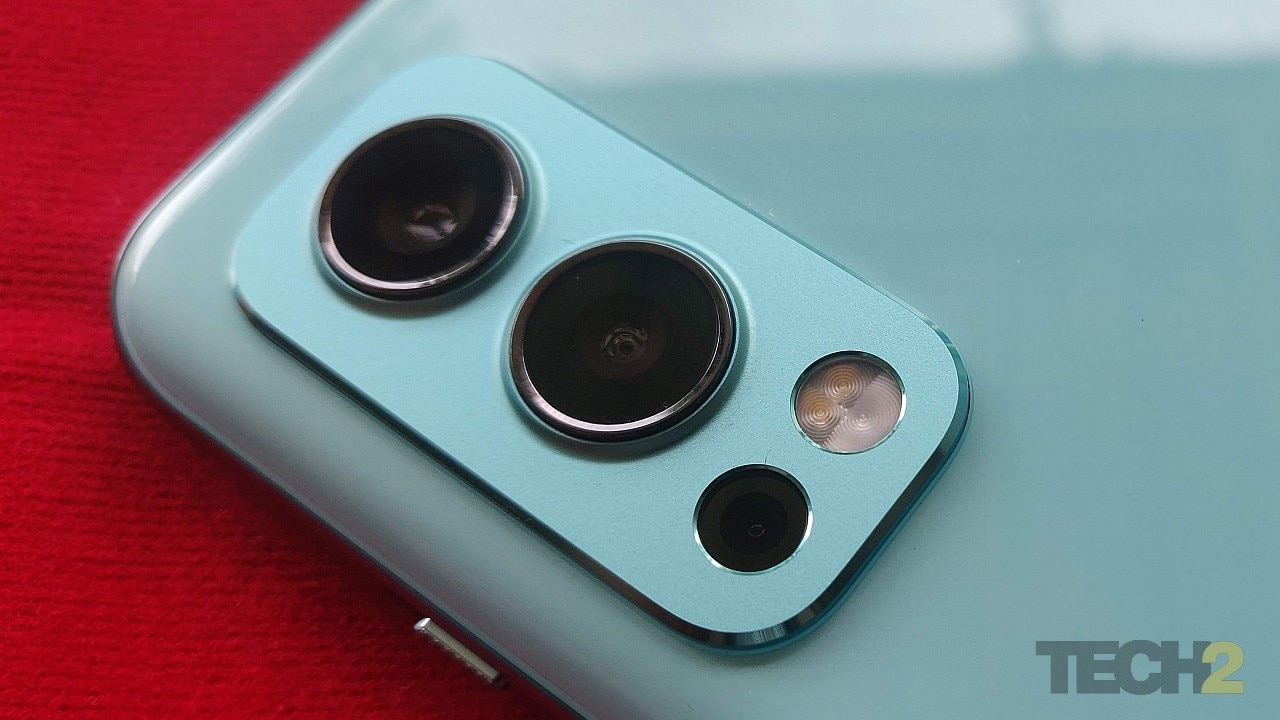
There is no Hasselblad colour tuning here as on the OnePlus 9, but the output is comparable, which is a big plus. Image: Tech2/Ameya Dalvi
OnePlus has switched to a triple-camera setup on the Nord 2, a camera less as compared to its predecessor. But it’s perfectly fine as the support cast on the Nord was there just to make up the numbers. Here, it’s the primary camera that does most of the heavy lifting. However, the company has upgraded the main camera to a 50 MP unit with the newer Sony IMX766 sensor with PDAF and optical image stabilisation (OIS).
This is the same sensor that is present in the ultrawide camera of the OnePlus 9, and incidentally, there is no OIS on the 9. Giving it company are an 8 MP ultra-wide camera with 119.7 degrees FOV and a 2 MP monochrome camera. There is no dedicated macro camera here, but the 2 MP unit on the Nord was no good anyway, and won’t be missed.
The primary camera captures some crisp shots in good to average lighting with good dynamic range. Unlike older OnePlus phones, colours feel a lot more natural on the Nord 2. There is no Hasselblad colour tuning here as on the OnePlus 9, but the output is comparable, which is a big plus. The pictures look clean without going overboard with the sharpening or saturation, and the noise is kept in check. The dynamic range is pretty good too. You do have the odd focusing issue when shooting from close range, and it wouldn’t be a bad idea to click a couple of extra shots to be doubly sure.
Click here to see the camera samples
The Portrait mode works well here with good foreground and background separation. The output is generally good, be it human subjects or other objects. The camera app also lets you adjust the level of blur. Though there’s a zoom toggle, there is no dedicated telephoto camera here. So, the zoomed shots are pretty much digitally zoomed images. 2X zoom shots are perfectly usable, while the 5X zoom shots are manageable on the phone screen at best. Don’t bother pixel-peeping on those. The ultrawide camera is average at best. The output is decent in well-lit conditions, but the images are noticeably softer in comparison to those captured using the main camera, but the dynamic range is decent.
Low-light photography on the main camera is surprisingly good. It gains well even when not using the Nightscape mode. Noise is kept in check and there is a good amount of detail in captured shots. Nightscape mode improves things, but takes a little longer to process the shot. When the light is low, you also have an Ultra Nightscape mode here, that does a great job in enhancing highlights in dark areas of the picture. At times, in that mode, the camera can see things even your eyes can’t. 2X zoom and ultra-wide camera are serviceable at best in low light, nothing special. I would suggest sticking to the main camera when the light drops.
Dual front cameras have been replaced with a single 32 MP selfie camera with a Sony IMX615 sensor that does a great job, and will certainly impress selfie enthusiasts. One point to note is that some of the more expensive OnePlus phones have a 16 MP selfie camera with an older sensor. The captured images are sharp, and the skin tone looks natural. You can click portrait shots too using the front camera, and they often come out well. Strangely, the front camera here cannot record 4K videos, and can only go as high as 1080p at 30 fps.
The rear cameras on the Nord 2 can record videos up to 4K resolution at 30 fps, and you can have 60 fps on 1080p videos. Slow-motion 1080p and 720p videos can be captured at 120 and 240 fps respectively. It also lets you record time-lapse videos at 30 fps in Full HD resolution. Captured 4K footage on the main camera looks lively and stabilised, courtesy of EIS (electronic image stabilisation) and OIS. 1080p videos shot on the main camera look sharp too with good colours. The camera app also offers some fun elements like AI enhancements and Dual View video where the front and rear cameras can be used simultaneously.
OS and user interface: OxygenOS retains soul despite ColorOS code unification
A lot of OxygenOS fans have been losing sleep after the announcement to have a unified code for OxygenOS and Oppo’s ColorOS. Nord 2 is the first device to run OxygenOS 11.3 based on that unified code. I am happy to report that not much has changed, except for the odd tweaks here and there, and a few minor changes in the camera app for instance. The essence of OxygenOS is still intact, and it looks and feels just the way it did before the merger.
It continues to be arguably the best Android UI around. It is clean, stutter-free, free of ads and with very little bloatware. As always, you have a handful of useful enhancements without deviating too far from stock Android UI. Again, OnePlus has opted for Google dialler, contacts and messaging (SMS) apps instead of their own. Incidentally, the trend started with the first Nord, and it has been that way ever since. The phone currently runs Android 11 out of the box and OnePlus promises two major Android updates (up to Android 13) and three years of security updates on the Nord 2, which is commendable.
Final words: This flagship killer can threaten some of its more expensive siblings
The OnePlus Nord 2 can be purchased in India at Rs 29,999 for the 8 GB RAM and 128 GB storage variant and Rs 34,999 for its 12 GB RAM variant with 256 GB storage. At that price, you get a phone with as good a design as that of a OnePlus 9 that’s Rs 20,000 more expensive, with performance comparable to the 9R that sells for Rs 40,000. It also improves on its predecessor on every front. All that translates into great value for money, and one can certainly call the Nord 2 a flagship-killer; to a point where one can seriously consider buying it over some of the more expensive OnePlus 9 series phones.
Having said that, the competition hasn’t been sitting idle. In fact, there are a couple of handsets that can give Nord 2 a serious run for its money. The Realme X7 Max (Review) and Poco F3 GT are also powered by the Mediatek Dimensity 1200 chip and sell for a few thousand rupees less. And that’s not all – both phones have higher 120 Hz refresh rate displays and 64 MP primary cameras (without OIS). The Poco F3 GT has a few extras for gamers including pop-up gaming triggers, but the software experience remains the best on Nord 2, courtesy of OxygenOS, making it a compelling choice in this segment.
Find latest and upcoming tech gadgets online on Tech2 Gadgets. Get technology news, gadgets reviews & ratings. Popular gadgets including laptop, tablet and mobile specifications, features, prices, comparison.
Post a Comment